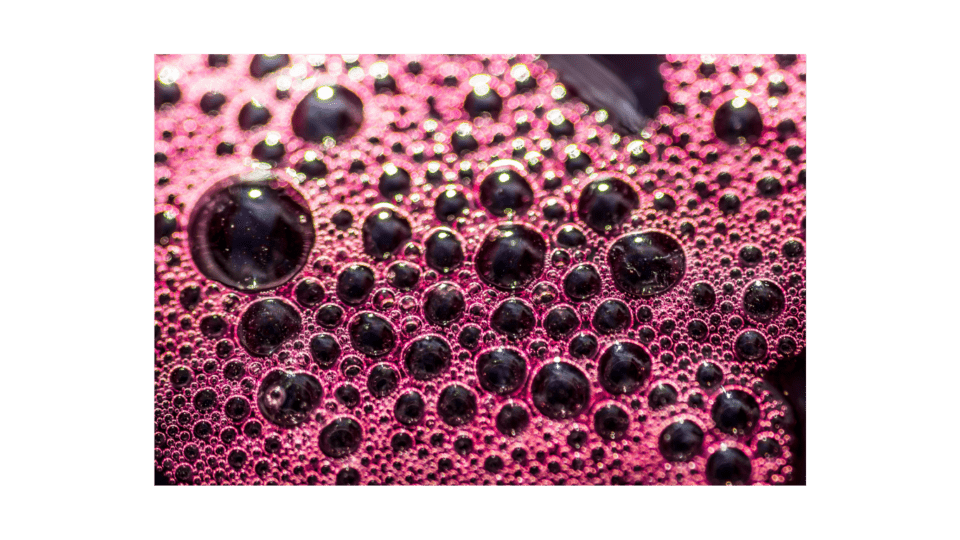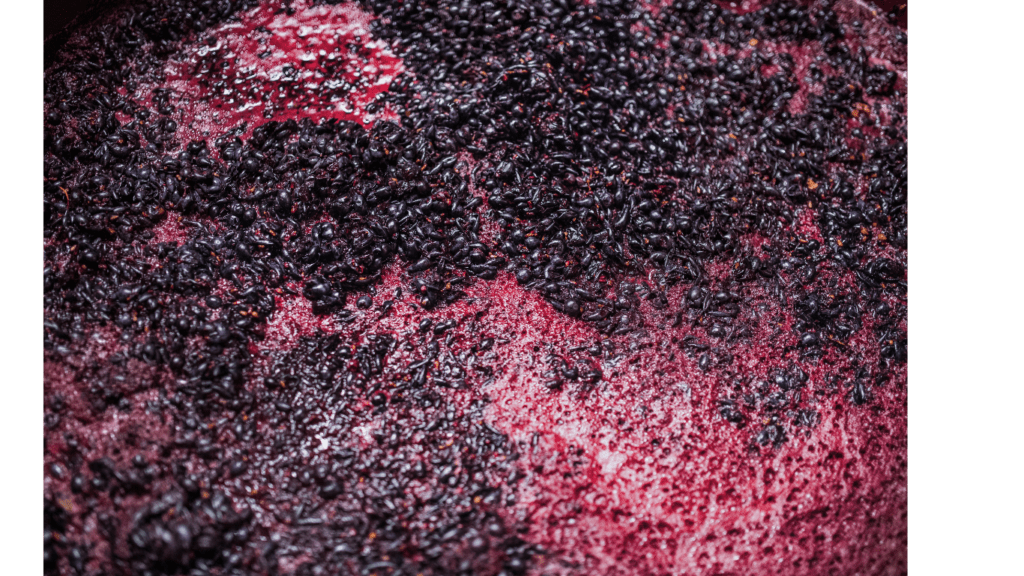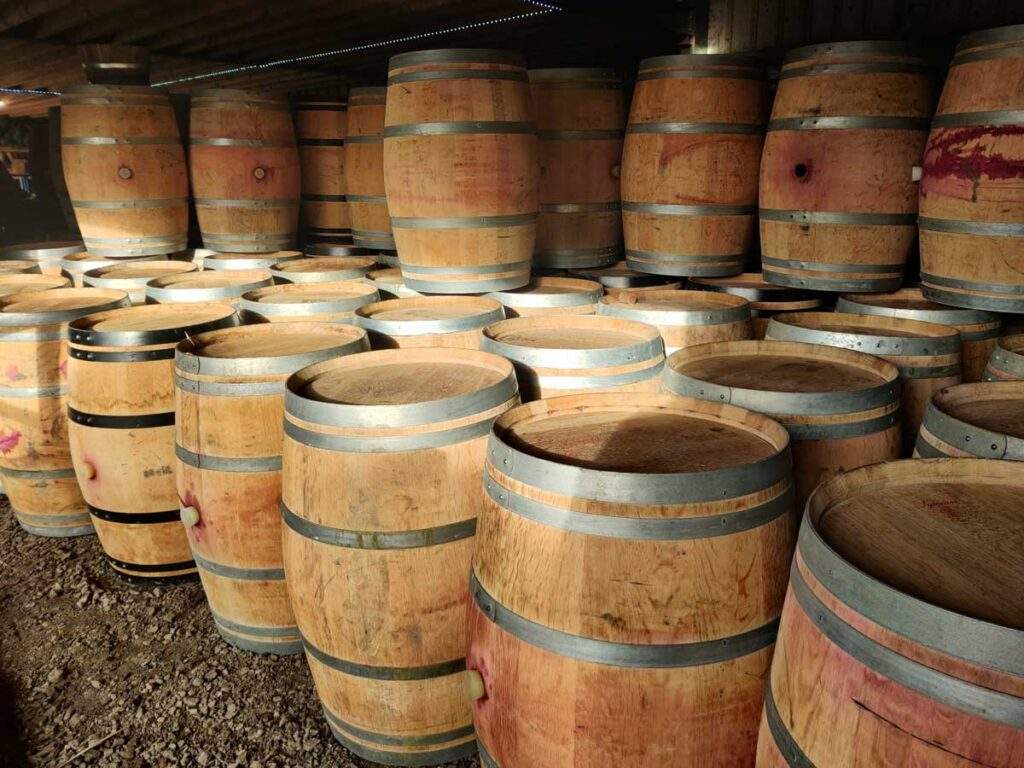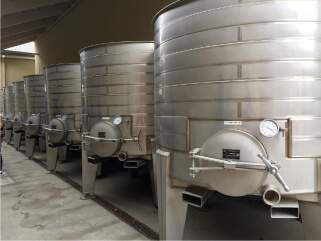Wine Fermentation: The Essentials

If you know a little bit about winemaking, then you know how crucial the fermentation process is for wine production. Simply speaking, fermentation converts the sugar from grapes into alcohol. However, you may be less familiar with the nitty-gritty chemistry behind this fascinating process and that’s where experts like us come in – welcome to The Basics of Winemaking 101.
Chemical Breakdown
Generally speaking, fermentation is the process of breaking down sugars to produce alcohol and carbon dioxide (CO2). Technically speaking, fermentation is the metabolism of carbohydrates by yeast with the goal of creating energy through the processes of glycolysis and electron transfers (and a lot of biochemical steps in between) to yield ethanol, carbon dioxide, and various other bioproducts.

Alcoholic fermentation can be summarized in a few steps:
- The yeast absorb simple sugars through their cell membranes.
- Glycolysis occurs – aka the breakdown of sugars into pyruvate, energy, and other byproducts.
- Decarboxylation of pyruvate to acetaldehyde – aka, a carbon dioxide (CO2) molecule is removed from the pyruvate and released into solution.
- Acetaldehyde is reduced to ethanol – aka, electrons are moved around and a hydrogen atom is added.
- Ethanol is expelled into the wine!
Fully metabolizing the sugars present can take two to four weeks depending on the wine’s temperature, acidity, alcohol concentration, and nutrient levels. Occasionally, environmental conditions may limit their ability to ferment all of the sugars leaving some in solution.

Fun Fact
Winemakers use the term must to refer to the juice, skins, seeds, and pulp before it undergoes fermentation. It would be used in a sentence such as: The yeast metabolize the sugars in the must.
Yeast: Wild vs Cultured
There are many strains of yeast that can be used in winemaking. Using different varieties can create unique profiles in a wine. Although most winemakers add a cultured yeast called Saccharomyces cerevisiae (a specific species of yeast), there are many strains with various capabilities and characteristics. Yeast can also be found naturally in the environment and on the skin of the grapes. These types of yeast are referred to as “wild” or “native” yeasts and are known for giving wines a unique, more complex flavor.

However, using only natural yeast can be risky business. More often than not, natural yeasts are not enough to fully complete the fermentation process before stalling due to changes in the wine, such as increased concentrations of toxic compounds (like ethanol). Cultured yeasts, on the other hand, are selected for their exemplary fermentation characteristics which allows for a much more predictable and streamlined process.
Wait… There’s More!
Fermentation creates more than just alcohol. It also produces other compounds such as,
- Hydrogen sulfide
- Esters
- Fatty acids
- Ketones
- Norisoprenoids
These compounds alter the flavor, coloring, and aroma of the wine. Esters play a particularly large role in giving each wine its diverse flavors and characteristics.
The Perfect Conditions for Wine Fermentation
Sugar → We know that sugar is CRUCIAL in order for fermentation to occur. It makes sense that when more sugar is found in the must, more alcohol can be created by the yeast. HOWEVER, yeast do have their own limitations and having more sugar than your yeast can handle leads to stuck fermentations and off-flavors.
Temperature → Fermentation temperatures play a significant role in the wine’s taste and flavor. Generally speaking, red wines are fermented at higher temperatures than whites. The higher temperature (68-86F) allows for more extraction from the skins and seeds. However, fermenting your wine at temperatures that are too hot can kill the yeast cells before they have the chance to metabolize the sugars. This, in turn, can dull flavors and result in a lower alcohol content. Some winemakers will do this purposefully in order to create sweeter wines with higher sugar contents.
Keeping white wine fermentations at a lower temperature (below 59F) helps slow down the fermentation process thereby preserving the delicate flavors and aromas created. Fermentation is an exothermic (heat-producing) reaction which can easily volatilize or break down these compounds. In order to keep them in solution, the developing wine should be kept at cooler temperatures.
Fun Fact
Flipping the norm and fermenting white wine at warmer temperatures will produce a variety of complex flavors. Fermenting red wine at lower temperatures will produce more fruity and sweet aromas.
Nitrogen → Nitrogen is a key component in the building blocks of protein. While protein has many roles within a yeast cell, one important function is to transport sugars across the cell membrane. To synthesize these useful proteins, Yeast Assimilable Nitrogen (YAN) must be present in solution. That is why it is so important to measure the YAN before fermentation begins!
Vessel → Choosing your fermentation vessel is an important step in the winemaking process. The two most common vessels that are used in winemaking today are stainless steel tanks and oak barrels. However, it is not uncommon to see concrete, glass, or clay tanks! The type of material selected can heavily influence a wine’s flavor profile due to the oxidation potential. Gradual oxidation occurs within oak barrels due to their small pores and openings, whereas stainless steel tanks prevent any unwanted oxygen from entering and reacting with the must, juice, or wine.


Fun Fact
Stainless steel tanks give the wine a crisper and sharper flavor and are primarily used for making whites and roses. Oak barrels create a smoother, rounder taste, and therefore are best suited for fermenting the majority of red wines and chardonnays. Some would say the barrels create a more “vanilla” infused wine.
Key Word Review
Science Words to smarten up your next convo
YAN
The quantity of nitrogen available for yeast nutrition during fermentation. Grape juice often needs to be supplemented with additional YAN to provide the yeast with enough nutrients to complete fermentation. YAN is made up of ammonia and Primary Amino Nitrogen (PAN). In brewing, PAN may also be referred to as FAN (Free Amino Nitrogen).
Saccharomyces cerevisiae
A species of yeast, commonly known as brewers yeast, used to make fermented beverages and baked goods. There are many strains which contribute unique flavors and aromas to the final product.
Yeast are a type of fungus. They are single-celled microorganisms that require food and moisture to survive. Yeast converts the sugar from grapes into CO2 and alcohol.
Glycolysis
The breakdown of glucose by enzymes. As a result of this reaction, pyruvic acid is formed. During the fermentation process, pyruvic acid is then broken down into ethanol and carbon dioxide.
Additional Resources
“An Introduction on Low Temperature Fermentation in Wine Production.” Penn State Extension, https://extension.psu.edu/an-introduction-on-low-temperature-fermentation-in-wine-production
“Nutrient Management during Fermentation.” Penn State Extension, https://extension.psu.edu/nutrient-management-during-fermentation.
